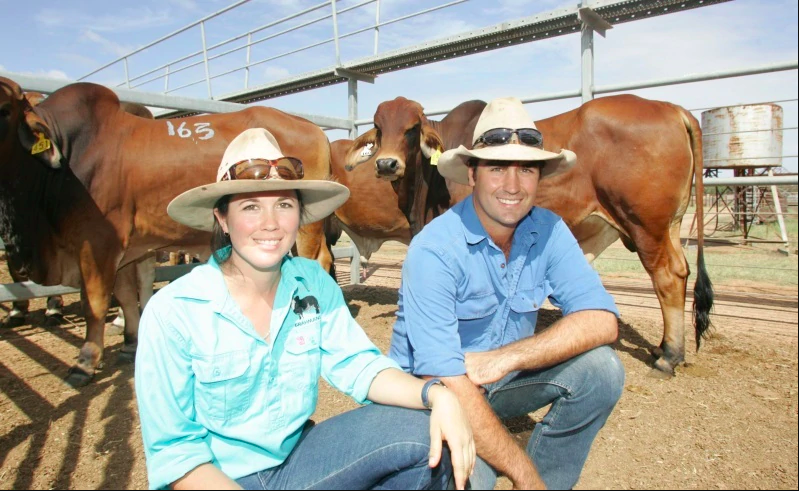The picturesque Glenforrie Station in northwest Western Australia is home to the Grey family. The station lies in West Pilbara, with the nearest town of Onslowaround 240 kilometres away. Glenforrie’s rugged hills give way to stony flats and valleys, with the start of the iron ore beltat their doorstep. Aticia Grey took overthe 197,000-hectare station from her brother Murray in 2014, when he moved to expand the family’s farming operation further south. It was their grandfather who purchased the land in the early 1980s, before their parents, Peter and Susan, bought it in 1993.
The Grey’s typically run five-and-a-half thousand head of Brahman cattle across the station and a 130,000-hectare neighbouring sub lease. While Brahmans canbetter handle harsh conditions and travel further to find feed, the drought hasdrastically cut that head count to 700. Murray says their average rainfall in the wet season is around the 250-millilitre mark but they’ve only averaged about 75mls this season. The majority of their cattle is sold through the live export market but they’re also currently exploring the domestic market. Running a breeding operation is what first attracted the family to the Remote walk over weighing system. The Grey’s were part of the system’s first trial five years ago. They’ve watched it develop into what Murray describes as a leader in its field that can withstand any Australian condition.
Murray says they’ve had good bang for buck in replacing their breeding heifers.The system identifies exceptional performers and they can select accordingly. Being able to receive real-time data from anywhere in the world is also impressive. “While I was on holiday in New Zealand I was able to log in and check that things were going well. It also shows things that weren’t even on our radar.”
The family were amazed at the shrinkage that occurs from handling the animals and breaking their routine. Murray says one herd faces a 14 kilometre day long walk to the homestead yard when mustering. The cattle are fed hay and water overnight but were discovered to be losing an average of three-and-a-half to five percent of body weight from paddock to yard. It took two weeks for those animals to get back to their original weight, which hadn’t been accounted for. Murray says it’s what made the auto-draft feature so exciting. Instead of an entire mob being handled and losing 20 kilograms each, just the number of cattle needed is drafted off and can go straight on the truck. Some of those animals may go through the yard four times before they’re on the truck. With the average being around $3 a kilo, Murray says the number thrown around were “astounding” once shrinkage was incorporated. “It’s a lot of money that gets lost for walking an animal into a yard and drafting it back out again.”It also means a four or five-person operation is now a one-person job.
Ultimately, the WOW system’s increased Glenforrie’s profitability but Murray says it’s also maintained their integrity.“When the stock agent rings up and gives us an order that’s come through, you can do a bit of fancy footwork and go back to a spreadsheet but it’s so much simpler to log on to the Datamars Livestock cloud software and put in the stats.”Straight away the system tells you how many animals are in that weight range. Cattle can get to market quicker and there’s less worry about going over or under specs.The system can also alert the team to any problems such as a breach in the fence. Murray says given the vast scale of the property, paddock fences get checked once every two to three months. “If all of sudden the number of cattle drops by 20 percent then it’s likely there’s a problem somewhere so you can respond.”
Murray says the Datamars technology not only identifies a problem but also helps rectify it at the same time. “It’s becoming harder and harder to remain profitable in this game, these sorts of developments are huge drivers in maintaining our profitability. You can essentially find a leaking hole and plug it in one move.”However, Murray is quick to point out its not just about making money. The Remote WOW system feeds into Glenforrie’s bigger goal of a more connected farm, with animal welfare at the core of what they do. They use the system to improve soil health and better manage grazing pressures to ensure they’re not overgrazing. Murray says the technology actually allows them to deliver on the statement that animal welfare is important to them. “I like to think that on the whole it’s making us markedly better animal managers and land managers.”
